Click here to
download a "printable" (large-print) version of these
notes.
Madison
Symphony Orchestra Program Notes
December
2-3-4, 2022
97th
Season / Subscription Program 4
J.
Michael Allsen
Welcome to A
Madison Symphony Christmas! As always, this concert is a
rich and varied feast of music for the season, ranging from
serious to lighthearted, and from classical works to popular
holiday favorites. We
welcome a pair of fine vocal soloists: Madison favorite,
mezzo-soprano Adriana Zabala, and baritone Nate
Stampley, a UW–Madison grad and Broadway star. The Madison
Symphony Chorus is joined by two community choirs: groups
from the Madison Youth Choirs and the Mt. Zion Gospel
Choir. We also feature soloists from the orchestra:
flutist Stephanie Jutt, violinist Suzanne Beia, and our
new principal oboist, Izumi Amemiya. And as always, after
a rousing Gospel finale, you get a chance
to join in.
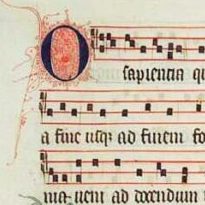 The music
of John Rutter (b.
1945) is nearly always part of our holiday concerts, and
here we begin with his setting of the Christmas hymn that
has the most ancient roots of all, O Come, O Come
Immanuel. This hymn has its origins in the
series of “O antiphons” (O sapientia, O radix Jesse, and several
others) that were chanted as early as the 8th century at
Vespers on the days leading up to Christmas—each one
invoking an aspect of Jesus. In 1851, an English clergyman,
John Mason Neale,
adapted these ancient texts as an English poem, O Come, O Come Emmanuel
and it was then set to the melody of a 15th-century
plainchant hymn, Veni,
Veni Emmanuel. Rutter’s arrangement is straightforward
and effective, beginning with an unadorned version of the
hymn in its beautiful simplicity.
The music
of John Rutter (b.
1945) is nearly always part of our holiday concerts, and
here we begin with his setting of the Christmas hymn that
has the most ancient roots of all, O Come, O Come
Immanuel. This hymn has its origins in the
series of “O antiphons” (O sapientia, O radix Jesse, and several
others) that were chanted as early as the 8th century at
Vespers on the days leading up to Christmas—each one
invoking an aspect of Jesus. In 1851, an English clergyman,
John Mason Neale,
adapted these ancient texts as an English poem, O Come, O Come Emmanuel
and it was then set to the melody of a 15th-century
plainchant hymn, Veni,
Veni Emmanuel. Rutter’s arrangement is straightforward
and effective, beginning with an unadorned version of the
hymn in its beautiful simplicity.
In
1717 George
Friderick Handel (1685-1759) moved to England to
compose and produce opera. For nearly two decades, Handel
was the most successful impresario in England, but by the
1730s, Handel’s Italian opera had gone out of fashion, and
he turned increasingly to the English oratorio. His
oratorios—dramatic renderings of Biblical stories familiar
to his English audiences—were enormously successful, and
their popularity endured and grew long after Handel’s death.
Messiah,
composed in 1741 is, of course, Handel’s most enduring
“hit,” but it is somewhat unusual among his oratorios in
that his text is a pastiche of direct quotes from the St.
James version of the Bible. The chorus For Unto Us a Child
is Born is drawn from Part I, a series of texts
from the New Testament on Christ’s
birth, and Old Testament prophecies—in this case a passage
from the Book of Isaiah. Handel was never shy about
recycling his own music, and in this case, borrowed nearly
of the chorus’s music from an earlier secular cantata. The
striking statements of “Wonderful” and “Counselor” were
created anew for this chorus, however.
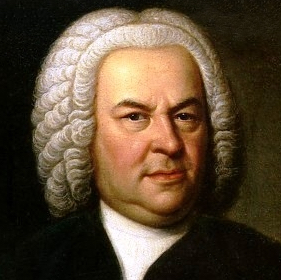 Though Johann Sebastian Bach
(1685-1750) spent
most of career at the Thomaskiche in Leipzig, he seems to
have spent some of the happiest years of his life at the
court of Prince Leopold of Anhalt-Cöthen. Bach served as Kapellmeister at
Cöthen from 1717 until he left for Leipzig. Much of his
composition at Cöthen was instrumental: chamber and
orchestra, including most of the famous “Brandenburgs” and
his orchestral suites. The prince maintained a small, but
very skilled orchestra, including several fine soloists. The
Concerto in C minor
for Oboe and Violin, BWV 1060R was among the
works written for the Cöthen orchestra. The violin part
could have been intended for any one of a number of
violinists at the court and the oboe part was probably
written for Bach’s colleague Johann Ludwig Rose, who doubled
as oboist in the orchestra and as the Prince’s private
fencing instructor! No score for the concerto survives, but
in around 1736, Bach rearranged the piece as a concerto for
two harpsicords (BWV 1060). This version was intended for
use by Bach’s Collegium
musicum in Leipzig, a group of amateur and
professional players that Bach directed throughout the
1730s. The editors of the critical edition of Bach’s works
used this keyboard version of the concerto to reconstruct
the original version heard at this concert. Bach’s lyrical
second movement Adagio
is spacious enough to allow the two soloists to fully
express an elegant theme. Their gracefully interweaving
lines are set above a muted string background, until a short
cadenza at the end.
Though Johann Sebastian Bach
(1685-1750) spent
most of career at the Thomaskiche in Leipzig, he seems to
have spent some of the happiest years of his life at the
court of Prince Leopold of Anhalt-Cöthen. Bach served as Kapellmeister at
Cöthen from 1717 until he left for Leipzig. Much of his
composition at Cöthen was instrumental: chamber and
orchestra, including most of the famous “Brandenburgs” and
his orchestral suites. The prince maintained a small, but
very skilled orchestra, including several fine soloists. The
Concerto in C minor
for Oboe and Violin, BWV 1060R was among the
works written for the Cöthen orchestra. The violin part
could have been intended for any one of a number of
violinists at the court and the oboe part was probably
written for Bach’s colleague Johann Ludwig Rose, who doubled
as oboist in the orchestra and as the Prince’s private
fencing instructor! No score for the concerto survives, but
in around 1736, Bach rearranged the piece as a concerto for
two harpsicords (BWV 1060). This version was intended for
use by Bach’s Collegium
musicum in Leipzig, a group of amateur and
professional players that Bach directed throughout the
1730s. The editors of the critical edition of Bach’s works
used this keyboard version of the concerto to reconstruct
the original version heard at this concert. Bach’s lyrical
second movement Adagio
is spacious enough to allow the two soloists to fully
express an elegant theme. Their gracefully interweaving
lines are set above a muted string background, until a short
cadenza at the end.
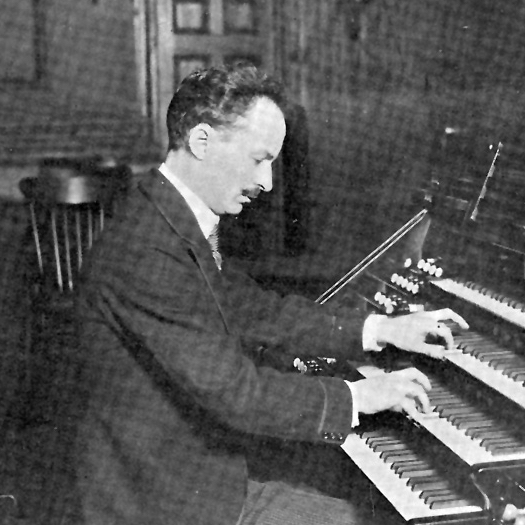 Pietro
Yon (1886-1943) was an organist and church composer.
Born in Italy, Yon emigrated to New York City in 1907, where
he held a series of prestigious posts, eventually serving as
organist at St. Patrick’s cathedral from 1927 until his death.
Yon was admired as a virtuoso performer, and composed dozens
of works for the organ. His catalog of works also includes an
oratorio, nearly two dozen masses, and many smaller choral and
keyboard pieces, but his best-known composition by far is the
Christmas song Gesù Bambino,
composed in 1917. It is heard here in an arrangement for
children’s choir and mezzo-soprano soloist. The next work is a
feature for the younger voices of the Madison Youth Choirs. Mack Wilberg (b.1955), director of the famed Mormon
Tabernacle Choir, wrote his One December Bright
and Clear
in 2001 for treble-voice choir. This work, a setting of
words by David Warner, is a bright, folk-like melody that
breaks joyfully into a round and then into full harmony.
Pietro
Yon (1886-1943) was an organist and church composer.
Born in Italy, Yon emigrated to New York City in 1907, where
he held a series of prestigious posts, eventually serving as
organist at St. Patrick’s cathedral from 1927 until his death.
Yon was admired as a virtuoso performer, and composed dozens
of works for the organ. His catalog of works also includes an
oratorio, nearly two dozen masses, and many smaller choral and
keyboard pieces, but his best-known composition by far is the
Christmas song Gesù Bambino,
composed in 1917. It is heard here in an arrangement for
children’s choir and mezzo-soprano soloist. The next work is a
feature for the younger voices of the Madison Youth Choirs. Mack Wilberg (b.1955), director of the famed Mormon
Tabernacle Choir, wrote his One December Bright
and Clear
in 2001 for treble-voice choir. This work, a setting of
words by David Warner, is a bright, folk-like melody that
breaks joyfully into a round and then into full harmony.
The hymn How Great Thou Art
was originally written in Swedish in 1885, as O store Gud (O Great God) by Carl
Boberg, and it was soon paired with a traditional Swedish
melody. The familiar English lyrics were penned in 1949 by an
English missionary, Stuart K. Hine. This grand arrangement by
Dan Forrest begins with a forceful choral introduction before
the tune enters, working its way to richly-harmonized final
verse.
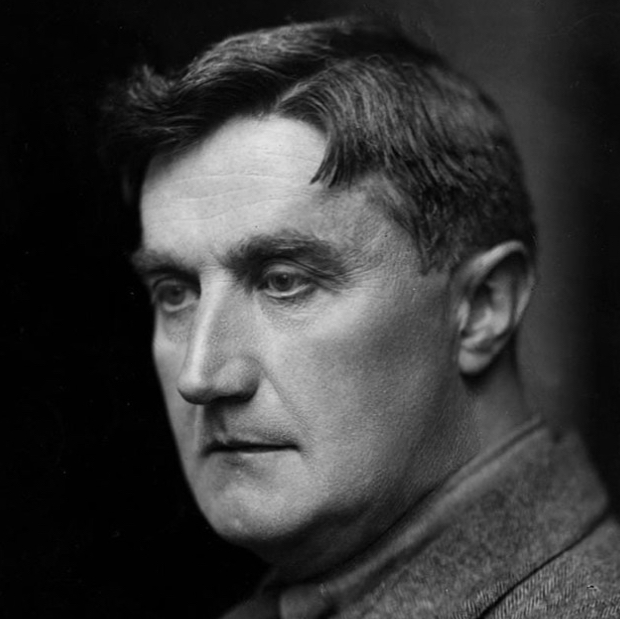 One of the great
ironies in the career of Ralph Vaughan Williams (1872-1958) is that this
composer—a professed atheist for much of his life who later
drifted into what his wife described as a “cheerful
agnosticism”—seems so much to have embodied modern English sacred
music. Beginning with his edition of The English Hymnal
(1906), he composed a huge body of hymn tunes, anthems,
Christmas carols, and larger sacred works. In his Magnificat,
he turned to one of the most traditional of liturgical
texts, one of the Biblical canticles (Luke 1: 46-55), sung
here in English. This prayer, in the voice of Mary, is her
response to the Annunciation that she had conceived a child
by the Holy Spirit. The Magnificat was sung
during the Vespers (Evensong) service in both the Catholic
Church and the Church of England. Vaughan Williams’s Magnificat was
composed for the mezzo-soprano Astra Desmond in 1932, and is
among the most innovative settings of this text. He was
careful to place a note in the score that his version “is
not intended for liturgical use”—recognizing that both the
spirit and the form of this work made it unsuitable for the
staid ritual of the church. He wrote to his friend Gustav
Holst that this was an effort to “lift the words out of the
smug atmosphere which had settled on them after being sung
at evening service for so long.” Here we have not merely a
prayer, but a dramatic scene with three characters. While
the soloist sings the canticle, a chorus of women plays the
role of the Angel of the Annunciation, inserting new
Biblical text. A third character appears in the guise of a
solo flute, described by Vaughan Williams as “the
disembodied visiting spirit”—that is, the spirit that enters
Mary’s womb. The choral music of the Angel is ethereal
throughout, while the flute’s line is unabashedly sensuous.
Mary’s part is operatic in both its style and in its breadth
of emotion, from her ecstatic opening phrase to the
power—and even warlike anger—of the line “He hath shewed
strength with his arm.” After a great moment of choral
rapture on “and of his Kingdom there shall be no end,” the
ending is quiet and understated, with a passionate duet
between the soloist and flute, and a hushed prayer by the
chorus.
One of the great
ironies in the career of Ralph Vaughan Williams (1872-1958) is that this
composer—a professed atheist for much of his life who later
drifted into what his wife described as a “cheerful
agnosticism”—seems so much to have embodied modern English sacred
music. Beginning with his edition of The English Hymnal
(1906), he composed a huge body of hymn tunes, anthems,
Christmas carols, and larger sacred works. In his Magnificat,
he turned to one of the most traditional of liturgical
texts, one of the Biblical canticles (Luke 1: 46-55), sung
here in English. This prayer, in the voice of Mary, is her
response to the Annunciation that she had conceived a child
by the Holy Spirit. The Magnificat was sung
during the Vespers (Evensong) service in both the Catholic
Church and the Church of England. Vaughan Williams’s Magnificat was
composed for the mezzo-soprano Astra Desmond in 1932, and is
among the most innovative settings of this text. He was
careful to place a note in the score that his version “is
not intended for liturgical use”—recognizing that both the
spirit and the form of this work made it unsuitable for the
staid ritual of the church. He wrote to his friend Gustav
Holst that this was an effort to “lift the words out of the
smug atmosphere which had settled on them after being sung
at evening service for so long.” Here we have not merely a
prayer, but a dramatic scene with three characters. While
the soloist sings the canticle, a chorus of women plays the
role of the Angel of the Annunciation, inserting new
Biblical text. A third character appears in the guise of a
solo flute, described by Vaughan Williams as “the
disembodied visiting spirit”—that is, the spirit that enters
Mary’s womb. The choral music of the Angel is ethereal
throughout, while the flute’s line is unabashedly sensuous.
Mary’s part is operatic in both its style and in its breadth
of emotion, from her ecstatic opening phrase to the
power—and even warlike anger—of the line “He hath shewed
strength with his arm.” After a great moment of choral
rapture on “and of his Kingdom there shall be no end,” the
ending is quiet and understated, with a passionate duet
between the soloist and flute, and a hushed prayer by the
chorus.
Though Antonín Dvořák (1841-1904)
has most often been represented in Overture Hall by his
orchestral works, he was also a prolific and sensitive choral
composer throughout his career. Some of his choral
works—particularly his great settings of Latin sacred texts:
the Stabat Mater, Te Deum, Requiem, and the Mass in D Major—were
tremendously popular in their time, and remain in the choral
repertoire today. The Mass in D Major is
his only surviving setting of the Latin Mass: he wrote and
discarded a pair of masses as a young man, while still
studying at the Prague Organ School, but the Mass in D Major was a
mature work written by an accomplished and, by then,
world-famous composer. Dvořák composed it in 1887 at the
request of a wealthy Czech architect and patron, Josef Hlávka, for the
consecration of a private chapel on Hlávka’s estate. This
initial version was a small-scale work that reflected the
resources Hlávka could provide: soloists, chorus, and organ.
Dvořák’s
London publisher Novello, published the work, but Novello
almost immediately asked for a larger version. The version
heard here, with orchestral accompaniment was completed in
1893, and was premiered in London on March 11 of that year.
The choral Gloria
movement heard here sets the standard Latin text from the
Mass. It begins with a—well—glorious choral fanfare on the ecstatic
opening words. Dvořák’s setting heightens the
changing meaning of the text, with a fugue leading to a more
prayerful middle section with a simple organ accompaniment.
This gradually leads to more exalted music and a rousing
fugal coda on the words Cum sancto spiritu.
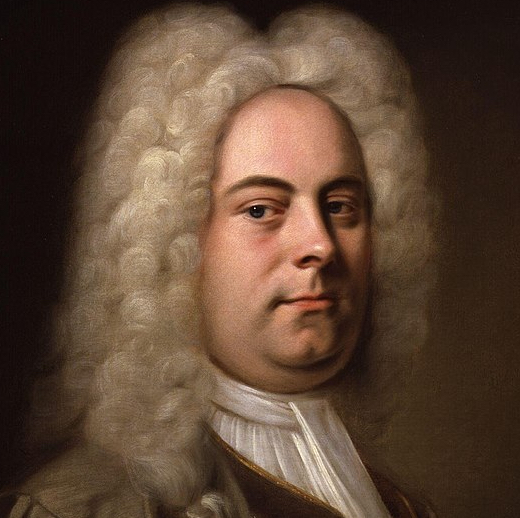 As
always, we return to Handel’s Messiah for the finale
to our first half: the
concluding Hallelujah
chorus from Part II. This chorus,
undoubtedly the single most famous work by Handel, has been
a sensation since the first performance of Messiah in Dublin
in 1742. 50 years later, while on tour in England, Joseph Haydn heard a festival performance of Messiah in May of
1791, and was profoundly moved: bursting into tears during
the Hallelujah
chorus. (The experience was a primary inspiration for
his own great oratorio, The Creation, of
1798.) The chorus is heard today in contexts that
Handel—tireless self-promoter though he was—never dreamed
of: movies, TV ads and sitcoms, and in cover versions in
styles ranging from gospel and jazz to rock, punk, and rap.
The music is in no danger of becoming a mere cliché,
however: it remains true to Handel’s original intent.
Following the first performance of Messiah in London,
the composer remarked: “My Lord, I should be sorry if I only
entertained them. I wished to make them better.”
As
always, we return to Handel’s Messiah for the finale
to our first half: the
concluding Hallelujah
chorus from Part II. This chorus,
undoubtedly the single most famous work by Handel, has been
a sensation since the first performance of Messiah in Dublin
in 1742. 50 years later, while on tour in England, Joseph Haydn heard a festival performance of Messiah in May of
1791, and was profoundly moved: bursting into tears during
the Hallelujah
chorus. (The experience was a primary inspiration for
his own great oratorio, The Creation, of
1798.) The chorus is heard today in contexts that
Handel—tireless self-promoter though he was—never dreamed
of: movies, TV ads and sitcoms, and in cover versions in
styles ranging from gospel and jazz to rock, punk, and rap.
The music is in no danger of becoming a mere cliché,
however: it remains true to Handel’s original intent.
Following the first performance of Messiah in London,
the composer remarked: “My Lord, I should be sorry if I only
entertained them. I wished to make them better.”
Nicolai Rimsky-Korsakov
(1844-1908) completed The Snow Maiden (Snegorouchka) in
1881—one of innumerable Romantic operas based upon fairy
tales. It retells the story from Russian folklore—by way of a
popular 1873 play—of the love of the young fairy princess, the
Snow Maiden, who has been raised by mortals, for a young man
of her village. This kind of fairy tale rarely ends “happily
ever after,” and this one is no exception, as both the Snow
Maiden and her lover die in the end. However, though it is a
tragedy, The Snow
Maiden includes some of Rimsky-Korsakov’s finest
operatic writing, and it apparently remained one his personal
favorites among his own works. There is nothing tragic about
the opera’s Dance of the Tumblers,
which opens our second half. This energetic and bumptious
music opens Act III of the opera, where the villagers are
throwing a wild party in celebration of the visiting Tsar.
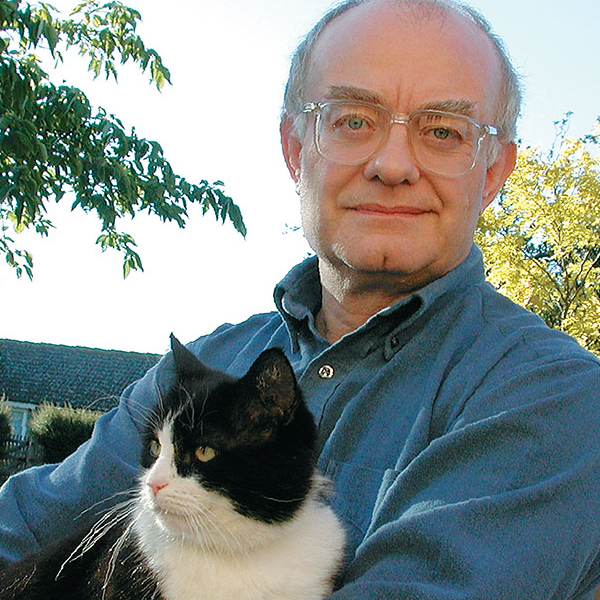 John
Rutter is
celebrated as both a choral conductor and as a composer of
choral works, from small anthems to settings of the Gloria, Magnificat, and Requiem. Rutter has
explained that Christmas music has “…always occupied a
special place in my affections, ever since I sang in my
first Christmas Festival of Nine Lessons and Carols as a
nervous ten-year-old boy soprano. For me, and I suspect for
most of the other members of the Highgate Junior School
Choir, it was the high point of our singing year, diligently
rehearsed and eagerly anticipated for weeks beforehand.
Later, my voice changed and I turned from singing to
composition, but I never forgot those early Highgate carol
services.” His Angel Tidings,
published in 1969, was based upon a Moravian carol, though
the words are Rutter’s own. This is a bright and joyful song
of celebration over the birth of Jesus.
John
Rutter is
celebrated as both a choral conductor and as a composer of
choral works, from small anthems to settings of the Gloria, Magnificat, and Requiem. Rutter has
explained that Christmas music has “…always occupied a
special place in my affections, ever since I sang in my
first Christmas Festival of Nine Lessons and Carols as a
nervous ten-year-old boy soprano. For me, and I suspect for
most of the other members of the Highgate Junior School
Choir, it was the high point of our singing year, diligently
rehearsed and eagerly anticipated for weeks beforehand.
Later, my voice changed and I turned from singing to
composition, but I never forgot those early Highgate carol
services.” His Angel Tidings,
published in 1969, was based upon a Moravian carol, though
the words are Rutter’s own. This is a bright and joyful song
of celebration over the birth of Jesus.
The hymn Come Thou Fount of
Every Blessing was written in 1758 by the British
pastor Robert Robinson. In the United States, this hymn was
paired with an anonymous tune known as Nettleton. This had
first appeared in 1813 in a “shape-note” collection titled Wyeth’s Repository of
Sacred Music. (Shape-note music, in which noteheads are
printed in different shapes corresponding to solfege
syllables, was a distinctly American tradition created in the
late 18th century. Like Nettleton,
many of these tunes have a rustic, sturdy beauty.) This
arrangement by Mack Wilberg opens simply with an a capella verse by
the women that replicates the simple spirit of the original,
moving gradually towards a lushly-orchestrated conclusion.
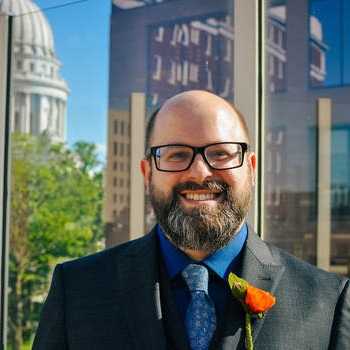 Our next two works are Christmas
songs in Spanish, in arrangements created especially for
this concert by local composer Scott Gendel. Los peces en
el rio—a familiar favorite in the
Spanish-speaking world—is an anonymous song from Spain. It
is a villancico, a form from the
Middle Ages, and the song itself is ancient, possibly dating
from as early as the 13th century. Its verses describe the
beauty and gentleness of the Virgin Mary and the poverty of
her baby boy, but its refrain is a joyful reminder that the
entire earth celebrated the birth of the Baby Jesus, even
the fish in the river. The line “Beben y beben y vuelven a
bebe” (They drink and drink, and drink again) is probably
meant to evoke an image of the fish chattering excitedly to
one another. According to Gendel, Adriana Zabala, for whom
this arrangement was created, describes this song as a kind
of “anti-Silent Night.” That is, that the birth of
Jesus is not met by quiet and calm but by noisy joy! A la nanita
nana was arranged as a duet for both of our
vocal soloists. This
song was published in 1904 by the Spanish songwriter José Ramón Gomis
(1856-1939). It
was written as a tender lullaby, with the kind of soothing,
murmuring refrain heard in lullabies of every culture.
Gendel injects a gentle dance feel into this setting,
reflecting, as he says, the “swaying
and dancing of a mother rocking a child.”
Our next two works are Christmas
songs in Spanish, in arrangements created especially for
this concert by local composer Scott Gendel. Los peces en
el rio—a familiar favorite in the
Spanish-speaking world—is an anonymous song from Spain. It
is a villancico, a form from the
Middle Ages, and the song itself is ancient, possibly dating
from as early as the 13th century. Its verses describe the
beauty and gentleness of the Virgin Mary and the poverty of
her baby boy, but its refrain is a joyful reminder that the
entire earth celebrated the birth of the Baby Jesus, even
the fish in the river. The line “Beben y beben y vuelven a
bebe” (They drink and drink, and drink again) is probably
meant to evoke an image of the fish chattering excitedly to
one another. According to Gendel, Adriana Zabala, for whom
this arrangement was created, describes this song as a kind
of “anti-Silent Night.” That is, that the birth of
Jesus is not met by quiet and calm but by noisy joy! A la nanita
nana was arranged as a duet for both of our
vocal soloists. This
song was published in 1904 by the Spanish songwriter José Ramón Gomis
(1856-1939). It
was written as a tender lullaby, with the kind of soothing,
murmuring refrain heard in lullabies of every culture.
Gendel injects a gentle dance feel into this setting,
reflecting, as he says, the “swaying
and dancing of a mother rocking a child.”
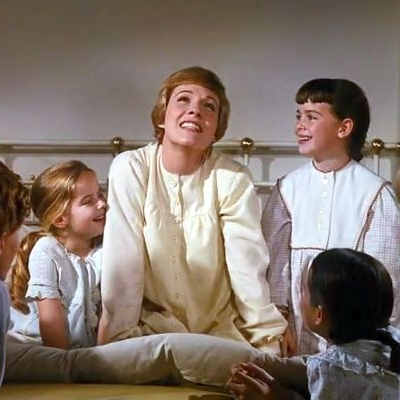 We continue with
features for our vocal soloists. The Sound of Music
was the eighth and final collaboration of composer Richard Rodgers and
lyricist Oscar
Hammerstein II. Beginning with Oklahoma! in 1943,
they created a series of phenomenally successful musicals that
ruled the Broadway stage, most of them becoming equally
successful Hollywood movies. The Sound of Music, a fictionalized version of
the story of the von Trapp Family singers, was a smash hit on
Broadway when it opened in 1959, running for some 1443
performances. The 1965 movie version was every bit as big a
hit, becoming one of the highest-grossing films of all time. My Favorite Things
is feature for Maria, the high-spirited governess of the von
Trapp children—sung by Mary Martin on Broadway and by Julie
Andrews on film. It is a quirky list of those things that she
thinks about to cheer herself up whenever it’s needed. Winter Wonderland
was one of many cheerful holiday songs that came out of the
Great Depression. It was a 1934 collaboration by lyricist Richard Smith and
composer Felix Bernard,
and was a No.2 hit that year for the Guy Lombardo orchestra.
The song, with its cozy, sentimental imagery of snowmen and
cold winter walks—and warming by the fire afterwards—had
tremendous staying power and was a hit for both Perry Como and
the Andrews Sisters in the 1940s. Since then, it’s never left
the list of holiday standards.
We continue with
features for our vocal soloists. The Sound of Music
was the eighth and final collaboration of composer Richard Rodgers and
lyricist Oscar
Hammerstein II. Beginning with Oklahoma! in 1943,
they created a series of phenomenally successful musicals that
ruled the Broadway stage, most of them becoming equally
successful Hollywood movies. The Sound of Music, a fictionalized version of
the story of the von Trapp Family singers, was a smash hit on
Broadway when it opened in 1959, running for some 1443
performances. The 1965 movie version was every bit as big a
hit, becoming one of the highest-grossing films of all time. My Favorite Things
is feature for Maria, the high-spirited governess of the von
Trapp children—sung by Mary Martin on Broadway and by Julie
Andrews on film. It is a quirky list of those things that she
thinks about to cheer herself up whenever it’s needed. Winter Wonderland
was one of many cheerful holiday songs that came out of the
Great Depression. It was a 1934 collaboration by lyricist Richard Smith and
composer Felix Bernard,
and was a No.2 hit that year for the Guy Lombardo orchestra.
The song, with its cozy, sentimental imagery of snowmen and
cold winter walks—and warming by the fire afterwards—had
tremendous staying power and was a hit for both Perry Como and
the Andrews Sisters in the 1940s. Since then, it’s never left
the list of holiday standards.
Let There Be Peace on
Earth (And Let It Begin With Me) was written by
the husband-wife team of Sy Miller and Jill Jackson, as
they were at a weeklong retreat on a California mountaintop.
Miller later recalled: “One summer evening in 1955,
a group of 180 teenagers of all races and religions, meeting
at a workshop high in the California mountains locked arms,
formed a circle and sang a song of peace. They felt that
singing the song, with its simple basic sentiment—’Let there
be peace on earth and let it begin with me,’ helped to
create a climate for world peace and understanding. When they came
down from the mountain, these inspired young people brought
the song with them and started sharing it...” This
inspirational song has developed an association with the
Christmas season, but its appeal and intent are much
wider—it became, for example a widely-heard anthem of peace
amidst the anger and sadness following the 9/11 attacks.
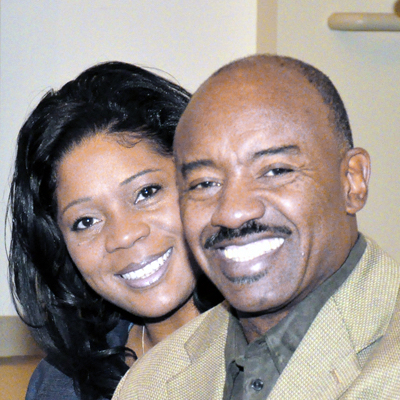 Once again this year, we are
privileged to welcome the Mount Zion Gospel Choir and its
directors Leotha and Tamera Stanley, presenting gospel songs
for the season arranged for these concerts by Leotha Stanley. Mt.
Zion opens with a new gospel arrangement of Do You Hear What I
Hear? This holiday standard was written in
1962 by composer Noel
Regney and his wife, lyricist Gloria Shayne Baker
wrote the holiday standard Do You Hear What I
Hear? in 1962 and it became a huge hit for Bing
Crosby in 1963, selling over a million records. Though
usually heard as a sentimental song to the Baby Jesus,
Regney later said “I am amazed that people can think they
know the song, and not know it is a prayer for peace.” It
was written in October 1962, at the height of the Cuban
Missile Crisis, when nuclear war seemed imminent. Contrary
to their usual practice, Regney wrote the lyric, and his
wife wrote the melody. The result was a song that they found
so moving that they couldn’t bear to sing it at first. The
final stanza, with its “Pray for peace, people everywhere!”
makes this as relevant in 2022 as it was in 1962. The Mount
Zion group then sings a Stanley original, The Spirit of Christmas
is Love, which was introduced at these concerts in
2014. Our finale, sung by every voice on stage, is a
newly-written song by Stanley, Christmas Bells: The
Message They Ring.
Once again this year, we are
privileged to welcome the Mount Zion Gospel Choir and its
directors Leotha and Tamera Stanley, presenting gospel songs
for the season arranged for these concerts by Leotha Stanley. Mt.
Zion opens with a new gospel arrangement of Do You Hear What I
Hear? This holiday standard was written in
1962 by composer Noel
Regney and his wife, lyricist Gloria Shayne Baker
wrote the holiday standard Do You Hear What I
Hear? in 1962 and it became a huge hit for Bing
Crosby in 1963, selling over a million records. Though
usually heard as a sentimental song to the Baby Jesus,
Regney later said “I am amazed that people can think they
know the song, and not know it is a prayer for peace.” It
was written in October 1962, at the height of the Cuban
Missile Crisis, when nuclear war seemed imminent. Contrary
to their usual practice, Regney wrote the lyric, and his
wife wrote the melody. The result was a song that they found
so moving that they couldn’t bear to sing it at first. The
final stanza, with its “Pray for peace, people everywhere!”
makes this as relevant in 2022 as it was in 1962. The Mount
Zion group then sings a Stanley original, The Spirit of Christmas
is Love, which was introduced at these concerts in
2014. Our finale, sung by every voice on stage, is a
newly-written song by Stanley, Christmas Bells: The
Message They Ring.
And then, friends, it’s your turn to sing...
________
program notes ©2022 by J. Michael Allsen